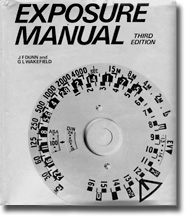I was thinking about this last night. Apparently Jim Richardson said "If you want to be a better photographer, stand in front of more interesting stuff". Once upon a time, long, long ago (are you sitting comfortably), that is what I was able to do, but it didn't make me a better photographer! I didn't worry about it, though; I trusted my camera and film, used whatever compositional skills I had, and fired away. Many of the results were satisfying... and that was largely (but not entirely) down to the "more interesting stuff".
So what's happened since? The camera is the same (or at least one of them), the films are better. I don't get in front of such extremely interesting stuff very often, but I do find some pretty good stuff.
I guess my expectations of myself have increased. I want a higher hit rate. When I find interesting stuff, I trust my compositional skills, but I want my technical skills to support me in making really good images.
To some extent, that seems to come down to understanding how the camera system (including the film) can deal with the stuff in front of me. Can I let it get on with its job and concentrate on composition? Or is the interesting stuff beyond the camera system's ability to render as I'd like it to (and if so, in what ways)? Can I (should I) override the meter etc or adjust the stuff in some way to get a better result?
And that understanding presumably is part of what people are getting at with the 10,000 hours. It's not enough to have an intellectual understanding; it has to get ingrained in my sub-conscious processes so that it's not overridden by that kinaesthetic adrenaline rush.
(When I was younger, a friend helped me learn to dive, over many lunch-time sessions in Reading's open-air pool. He patiently kept telling me what to do, in different ways. I kept patiently trying to do it, and achieving a belly-flop. Then one day everything went right; I surfaced and said excitedly "ah, NOW I see what you mean!". Words are pretty inadequate sometimes...)
Which is why I keep asking these darn-fool questions, and trying to understand short-hand codes like the Zone System!
(BTW thanks abbandon, will check out those references!)


